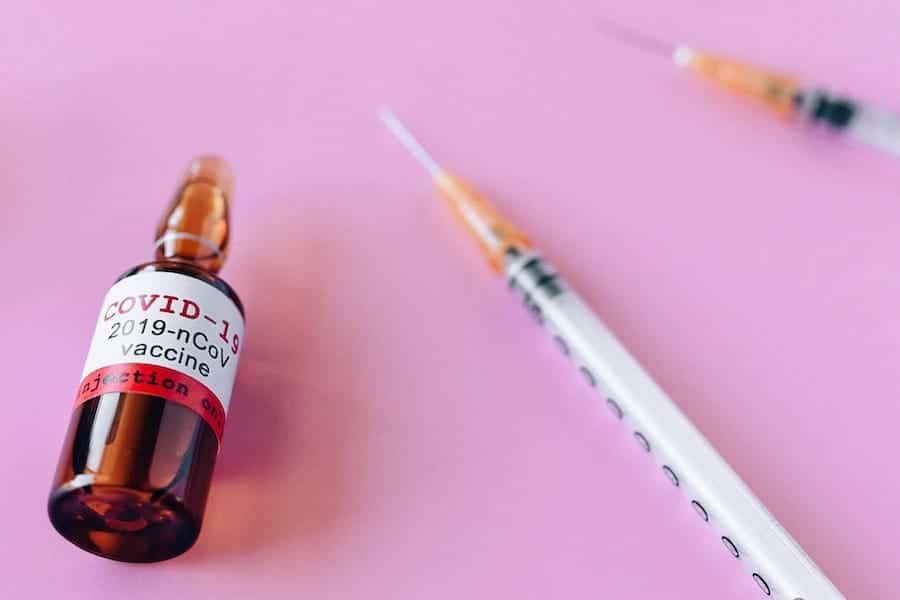
Cosmetic procedures, particularly Botox injections, have witnessed a surge in popularity in Texas. However, ensuring safe and effective administration requires a comprehensive understanding of the regulations governing these procedures. In Texas, only qualified medical professionals are authorized to perform Botox injections. This article explores the legal landscape surrounding Botox administration, the eligible professionals allowed to administer it, the significance of proper training and certification, and the imperative of choosing reputable providers. By shedding light on these aspects, readers can make informed decisions to achieve their desired aesthetic outcomes while prioritizing their safety.
Who Can Inject Botox In Texas?
In Texas, qualified medical professionals, such as physicians, registered nurses (RNs), nurse practitioners (NPs), physician assistants (PAs), dentists, and dermatologists, are authorized to administer Botox injections.
Botox And Its Applications
Botox, a neurotoxin derived from the bacterium Clostridium botulinum, has proven to be a versatile and effective treatment with various applications in both medical and cosmetic fields.
Botox has significant therapeutic applications, including treating chronic migraines, muscle spasms, and certain neurological disorders. It is widely used to alleviate cervical dystonia (neck muscle contractions), blepharospasm (uncontrolled eyelid twitching), and hyperhidrosis (excessive sweating). Additionally, Botox has been approved for managing overactive bladder and reducing the severity of bruxism (teeth grinding).
Botox is renowned for its cosmetic applications, particularly in reducing facial wrinkles and fine lines. It works by temporarily relaxing targeted facial muscles, smoothing out wrinkles such as forehead lines, glabellar lines (frown lines between the eyebrows), and crow’s feet. Botox is also employed to create a brow lift, soften bunny lines around the nose, and diminish vertical neck bands.
Botox functions by blocking the release of acetylcholine, a neurotransmitter responsible for muscle contractions. When injected into specific muscles, it inhibits their ability to contract, resulting in a temporary reduction in muscle activity. This causes the muscles to relax, leading to the softening of wrinkles and providing relief for various medical conditions.
One of the most appealing aspects of Botox treatments is their non-surgical nature. The injections are minimally invasive, quick, and typically do not require anesthesia. Patients can resume their regular activities soon after the procedure, making it a popular choice for those seeking convenient cosmetic enhancements or medical relief.
Regulations And Laws For Botox Administration In Texas
In Texas, the administration of Botox is subject to strict regulations and laws to ensure patient safety and proper medical practice. The Texas Medical Board (TMB) plays a crucial role in overseeing and enforcing these regulations. Here are some key aspects of the regulations and laws for Botox administration in the state:
- Qualified Medical Professionals: Only licensed and qualified medical professionals are allowed to administer Botox injections in Texas. This includes physicians, registered nurses (RNs), nurse practitioners (NPs), physician assistants (PAs), dentists, and dermatologists. These professionals have the necessary training and expertise to perform the procedures safely.
- Scope of Practice: The TMB defines the scope of practice for each eligible medical professional regarding Botox administration. This ensures that practitioners stay within their area of expertise and do not perform procedures beyond their training.
- Supervision Requirements: In some cases, non-physician professionals, such as RNs and NPs, may be allowed to administer Botox injections under the supervision of a licensed physician. The level of supervision required varies depending on the specific circumstances and the professional’s qualifications.
- Training and Certification: To administer Botox in Texas, medical professionals must undergo appropriate training and obtain certification in cosmetic procedures. Approved training programs provide the necessary knowledge and skills to perform the injections safely and effectively.
- Informed Consent: Texas law mandates that patients must provide informed consent before receiving Botox injections. This process ensures that patients are fully aware of the procedure, its potential risks and benefits, and any alternative treatments available.
- Facility Standards: The TMB also sets guidelines for the facilities where Botox injections are performed. These guidelines include maintaining a clean and safe environment and adhering to infection control protocols.
Importance Of Proper Training For Botox Administration
Proper training for Botox administration is of paramount importance for several crucial reasons:
- Patient Safety: Botox is a potent neurotoxin that can cause adverse effects if not administered correctly. Proper training ensures that medical professionals understand the anatomy of facial muscles and nerves, reducing the risk of complications and ensuring the safety of patients.
- Correct Dosage and Placement: Precise dosing and accurate injection site placement are essential for achieving desired results in cosmetic procedures. In medical applications, such as treating muscle spasms or chronic migraines, the correct dosage is critical for therapeutic effectiveness.
- Identifying Contraindications: Comprehensive training enables medical professionals to identify contraindications and potential risks for patients. Certain medical conditions and medications may interact unfavorably with Botox, making it necessary to assess a patient’s suitability for the procedure.
- Managing Adverse Reactions: Despite its generally safe nature, Botox injections can lead to adverse reactions in some cases. Properly trained practitioners are better equipped to recognize and manage any adverse effects that may arise during or after the procedure.
- Achieving Optimal Results: Proper training not only minimizes risks but also maximizes the chances of achieving the desired cosmetic outcomes. Knowledge of injection techniques and facial anatomy allows professionals to create natural-looking results tailored to each patient’s needs.
- Ethical Considerations: As Botox is a sought-after cosmetic treatment, some unqualified individuals may attempt to administer injections without proper training. Seeking treatment from a trained and certified professional ensures ethical practices and adherence to medical guidelines.
- Legal Compliance: In many regions, including Texas, it is a legal requirement for medical professionals to undergo specific training and obtain proper certification before performing Botox procedures. Compliance with these regulations helps avoid legal issues and potential liabilities.
- Building Patient Trust: Patients are more likely to trust medical professionals who have undergone formal training and can demonstrate their expertise in administering Botox injections. Building trust is essential for maintaining a positive reputation and fostering long-term patient relationships.
Potential Side Effects Of Botox Injections
While Botox injections are generally considered safe when administered by qualified professionals, there are potential side effects that patients should be aware of:
- Bruising: Mild bruising at the injection site is a common side effect and usually resolves within a few days. Avoiding blood-thinning medications and applying ice packs can help reduce the risk of bruising.
- Headache: Some patients may experience mild headaches following Botox injections, particularly in the first few days. These headaches are usually short-lived and can be managed with over-the-counter pain relievers.
- Swelling and Redness: Injection sites may become slightly swollen or red, but this typically subsides quickly after the procedure.
- Allergic Reactions: Although rare, some individuals may be allergic to Botox. Symptoms of an allergic reaction can include itching, hives, or difficulty breathing. Immediate medical attention is necessary if any signs of an allergic reaction occur.
- Ptosis (Drooping Eyelids): In some cases, Botox can migrate to nearby muscles, causing temporary drooping of the eyelids. This effect is usually mild and resolves on its own within a few weeks.
- Unintended Facial Weakness: If too much Botox is administered or if injection placement is inaccurate, it can lead to unintended weakness or paralysis of facial muscles. This can result in asymmetrical facial expressions but typically improves as the effects of Botox wear off.
- Flu-like Symptoms: Rarely, patients may experience flu-like symptoms, such as fatigue or mild fever, shortly after receiving Botox injections. These symptoms are usually temporary.
- Nausea: In some cases, patients may experience mild nausea following Botox treatment, but this is relatively uncommon.
The Future Of Botox In Texas
The future of Botox in Texas is likely to be influenced by various factors, including technological advancements, evolving regulations, and shifting trends in the cosmetic industry. Here are some potential developments that could shape the future of Botox treatments in the state:
- Advancements in Botox Formulations: Pharmaceutical companies may continue to innovate and develop new formulations of Botox with improved properties, such as longer-lasting effects or faster onset of action. These advancements could enhance patient satisfaction and expand the range of applications for Botox in both medical and cosmetic fields.
- Increased Access and Convenience: As the demand for cosmetic procedures grows, there may be an increase in the number of medical professionals offering Botox treatments. This could lead to improved accessibility and convenience for patients seeking these services.
- Personalized Treatment Plans: With advancements in facial imaging and analysis technology, providers may be able to create more personalized treatment plans for Botox injections. Tailoring treatments to individual facial structures and aesthetic goals could result in more natural-looking and customized results.
- Combination Therapies: Botox is often used in combination with other cosmetic treatments, such as dermal fillers or laser therapies, to achieve comprehensive facial rejuvenation. The future may see an increase in combination therapies that offer synergistic effects for optimal outcomes.
- Non-Cosmetic Medical Applications: Botox has shown promise in treating various medical conditions beyond its cosmetic uses. Continued research may lead to the approval of Botox for new therapeutic applications, expanding its role in managing medical conditions.
- Enhanced Training and Safety Measures: With an increased focus on patient safety, there may be stricter regulations and training requirements for medical professionals offering Botox injections. This could help ensure that only qualified and skilled practitioners administer the treatments.
- Growing Awareness and Acceptance: As cosmetic procedures become more widely accepted, the stigma around Botox and similar treatments may lessen. Increased awareness and education about Botox’s safety and benefits could encourage more individuals to consider it as a viable option for addressing aesthetic concerns.
Conclusion
In conclusion, Botox remains a popular and promising option for both medical and cosmetic purposes in Texas. With qualified professionals adhering to strict regulations, patients can continue to benefit from safe and effective treatments. As the field evolves, advancements in technology and research will likely enhance the overall experience, making Botox an increasingly accessible and reliable solution for individuals seeking aesthetic improvements and medical relief in the state.
FAQ’s
Is Botox Safe?
Botox is considered safe when administered by qualified medical professionals. However, like any medical procedure, it carries potential risks and side effects. Adhering to proper dosage, and injection techniques, and selecting certified providers can minimize risks and ensure safety.
How Long Do Botox Effects Last?
The effects of Botox are temporary and typically last around 3 to 6 months. The duration may vary depending on individual metabolism and the treated area. Maintenance treatments are necessary to sustain the results.
Does Botox Hurt?
Botox injections are relatively quick and generally cause minimal discomfort. Some patients may experience mild pain or a slight pinch at the injection site. Providers may use topical anesthetics or ice packs to enhance comfort during the procedure.
Can Botox Treat Wrinkles Other Than Frown Lines And Crow’s Feet?
Yes, Botox can effectively treat various wrinkles and fine lines, including forehead lines and neck bands. It can also be used to elevate the eyebrows and address lines around the mouth.
Are There Any Long-Term Side Effects Of Botox?
While Botox is safe for most individuals, there are no known long-term side effects associated with its proper use. However, over time, facial muscles may weaken due to repeated treatments, leading to potential cosmetic changes. This emphasizes the importance of selecting skilled practitioners for Botox injections.








